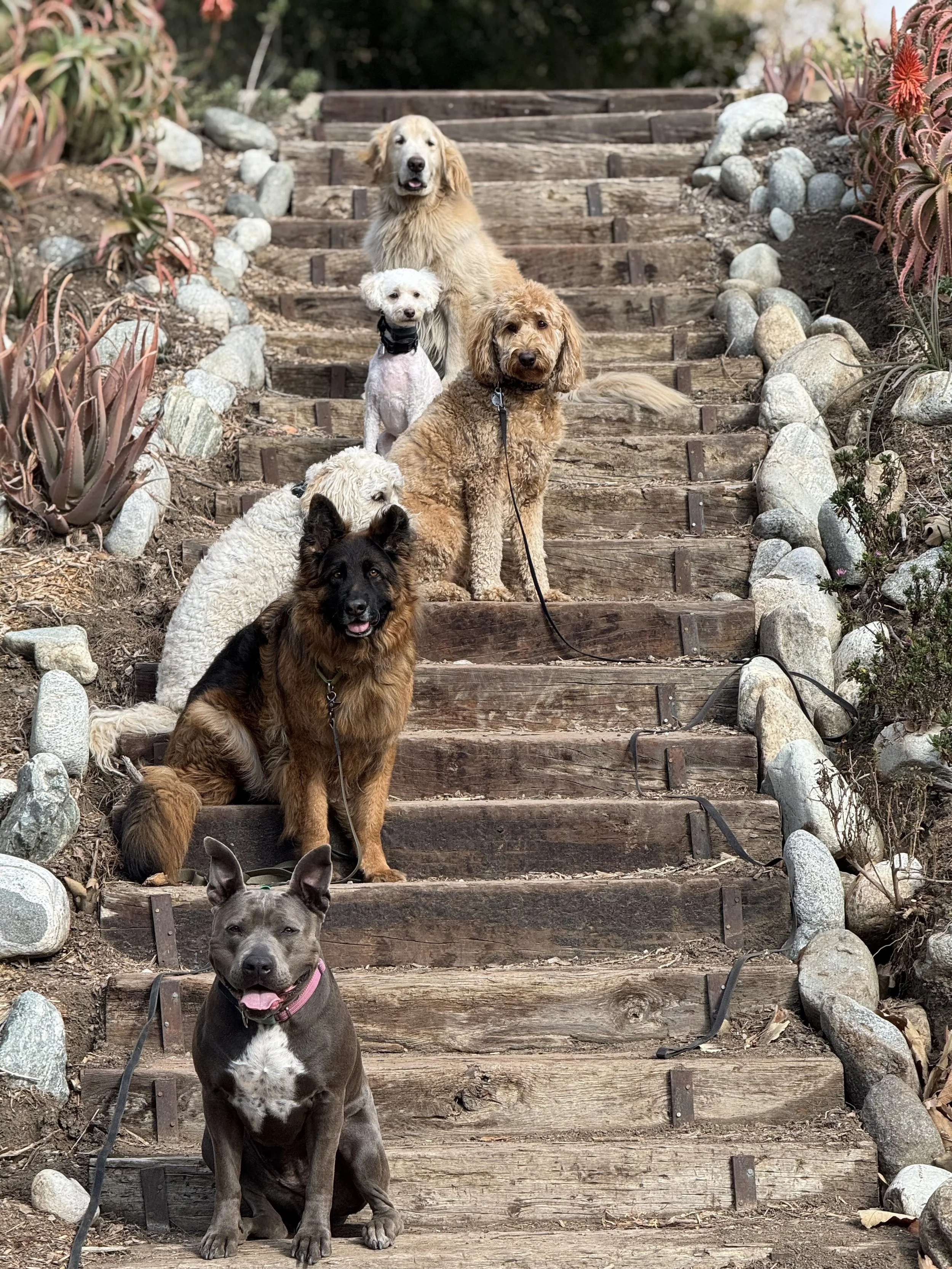Can I train my dog to be less reactive and/or less aggressive?
A majority of the dogs that attend our classes have had a history of reactivity and/or aggression - here is a photo of our pups coexisting during a Saturday Huntington Beach group class.
The reactivity and/or aggression from our dogs is usually a result of fear or anxiety. A lack of confidence around people, dogs, cars, loud noises, etc. - that lead our dogs to default to defensive instincts. In cases of social reactivity, we may see the neighboring dogs walk by us on the street, while our dog is lunging towards them to play. Though the ladder is a more light-hearted situation, it displays the same confusion and disturbance to our order.
With obedience training, we work to build your dog’s confidence by labeling the handler as the leader of the pack. Our goal is to develop a clear chain of command in our dog/human relationship - mom or dad is in charge right now, so follow their lead. If you ask for a “sit”, your dog must sit. If you ask for a “come”, your dog must come.
Our approach will not be to rid them of their reactivity, but rather get them to pay attention to us. Which in turn, better shapes how they will react around disturbances in the future.
Working through these distractions and triggers from a training stand point, allows us to:
Regain our dog’s focus
Sharpen our obedience skills
Control the exposure to stress
Only after we have practiced using the equipment and our dogs have displayed an understanding of commands, will we begin to expose reactive and aggressive dogs to their respective triggers.
It is vital that they have an understanding of the tools (e-collar, leash pressure, rewards, etc.), prior to incorporating these distractions - as this allows them to see the correct response/positioning/outcome to each command before adding more disturbance to our environment.
We will begin by working around small distractions (treats, toys, inviting body language). Then we will aim to increase the environmental stimulation (dogs, people, doorbells, etc.).
We set ourselves and our dogs up for success by working slowly, safely, and deliberately. Ensure that you know the equipment, ensure that they know the commands, then begin to add the appropriate distractions and regain/maintain their attention via obedience training.
